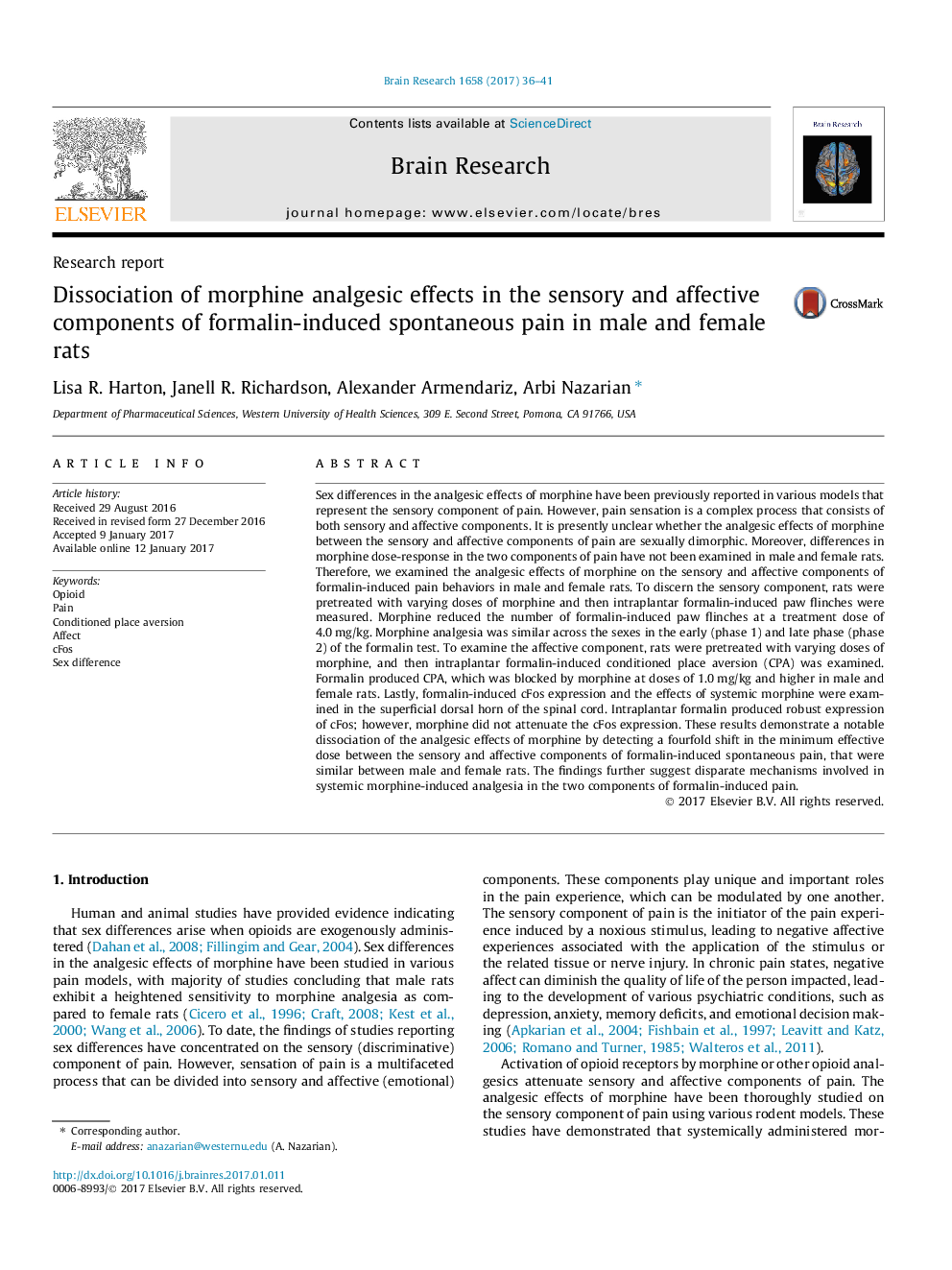| Article ID | Journal | Published Year | Pages | File Type |
|---|---|---|---|---|
| 5736908 | Brain Research | 2017 | 6 Pages |
â¢Formalin-induced paw flinch pain behavior was attenuated with morphine (4.0 mg/kg).â¢Formalin-induced conditioned place aversion was blocked with morphine (1.0 mg/kg).â¢The minimum effective dose of morphine was shifted between the two pain behaviors.â¢Formalin-induced cFos in the spinal cord was not reduced by morphine doses tested.â¢Sex differences were not detected in the experiments presented.
Sex differences in the analgesic effects of morphine have been previously reported in various models that represent the sensory component of pain. However, pain sensation is a complex process that consists of both sensory and affective components. It is presently unclear whether the analgesic effects of morphine between the sensory and affective components of pain are sexually dimorphic. Moreover, differences in morphine dose-response in the two components of pain have not been examined in male and female rats. Therefore, we examined the analgesic effects of morphine on the sensory and affective components of formalin-induced pain behaviors in male and female rats. To discern the sensory component, rats were pretreated with varying doses of morphine and then intraplantar formalin-induced paw flinches were measured. Morphine reduced the number of formalin-induced paw flinches at a treatment dose of 4.0Â mg/kg. Morphine analgesia was similar across the sexes in the early (phase 1) and late phase (phase 2) of the formalin test. To examine the affective component, rats were pretreated with varying doses of morphine, and then intraplantar formalin-induced conditioned place aversion (CPA) was examined. Formalin produced CPA, which was blocked by morphine at doses of 1.0Â mg/kg and higher in male and female rats. Lastly, formalin-induced cFos expression and the effects of systemic morphine were examined in the superficial dorsal horn of the spinal cord. Intraplantar formalin produced robust expression of cFos; however, morphine did not attenuate the cFos expression. These results demonstrate a notable dissociation of the analgesic effects of morphine by detecting a fourfold shift in the minimum effective dose between the sensory and affective components of formalin-induced spontaneous pain, that were similar between male and female rats. The findings further suggest disparate mechanisms involved in systemic morphine-induced analgesia in the two components of formalin-induced pain.
